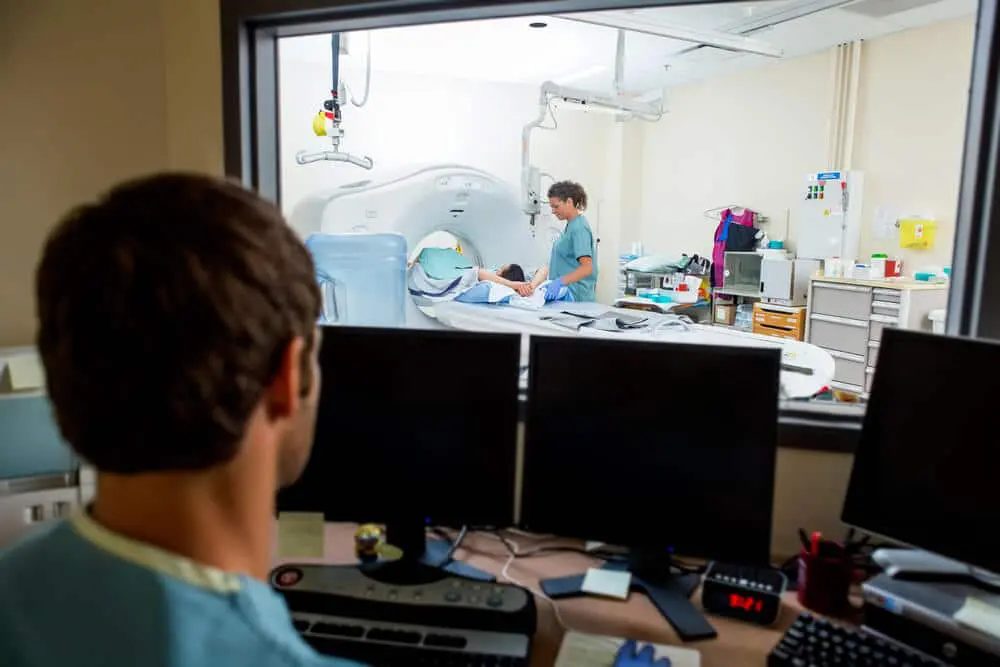Prepare for Your Future Healthcare Career: Smart Strategies
Date: June 14, 2022
If you’ve seen the news lately, you realize healthcare careers are on the rise. With the “Baby Boom Generation” entering senior years, the nation’s healthcare needs are simultaneously expanding. According to the Bureau of Labor Statistics, employment in healthcare is projected to grow 16 percent from 2020–2030,1 much faster than the averages for all other occupations and adding about 2.6 million new jobs. The industry is projected to bring more employment than any other occupational group, with the expected growth leading to greater demand for healthcare services and workers.1 Are you interested in a pathway toward becoming a healthcare professional?
We are Your Support For Your Educational Journey
Aiming to have graduates ready to enter equipped with requisite skills, Gurnick Academy of Medical Arts faculty and staff strive to support students in their educational healthcare journeys. So, even if you haven’t yet applied to an allied healthcare program, you can begin to launch your dream today! Here are some tips to help you get started.

Getting Started
There’s an old joke about a piano student who asked his teacher how to get to Carnegie Hall. The teacher replied, “practice, practice, practice.” It is the same with your vocation. The key to pursuing your academic dream is to: prepare, prepare, prepare. Do your want your college tenure hallmarked by late-night cramming sessions? Do you want to barely make it, or would you like to go in prepared and ready instead? Even before walking into the classroom, developing good study habits and building self-discipline can pay dividends later! Here are some ways to do this before your first day in class.
1. Get an Overview
Decide which assignments will most affect your grades and what concepts may show up on tests, then allocate in advance how much time to spend in which areas. Course descriptions, program goals, objectives, and other field information, lengths, and schedules can be found on your prospective school’s lists of academic programs webpage. Most often, syllabi for each class are also available for the asking. Check out your discipline’s reading lists, study aides, and cliff notes. Try building your memory capacity before your first class. One can often locate core reading lists before enrollment.
2. Get Organized
Organizational methods include categorizing lessons by specific color codes, arranging events by date, and allocating items by class and professor. However, it doesn’t matter how complex or creative your system is if you can’t use or maintain it. You may require a simple system such as a segregated binder and calendar or just one box marked “to do” and the other marked “done.” What matters is that your system works for you and can be easily maintained. You will need organization to be successful in college. Therefore, planning your strategy now can provide a leg up.
3. Create a Study Space
Study space can include a closet, a corner in the public library, a large oak desk in a vaulted office, or a roped-off area near a stack of cardboard boxes in an old garage. What matters is that your study environment works and has the tools you require. Make sure to check the lighting. Is the seat comfortable? Ensure the noise level is low and the outlets are available. Ensure Internet access and nearby interruptions can be minimized.
4. Identify Your Support Network Ahead of Time
Locate study groups, help teams, tutors, online resources, Zoom meetings, and other resources. Many free online resources are available such as downloadable medical vocabulary flashcards, free practice Q&As, sample tests for licensing exams such as the NCLEX exam, etc. Familiarizing yourself with tutoring places and support systems ahead of time increases your chances of success.
5. Jump Into Real Life Experiences
Practical applications can often be as crucial to learning as didactic instruction within healthcare. Gurnick Academy of Medical Arts offers specific courses, academics, laboratories, and clinical sections. If you know you will be learning how to administer immunizations or take vitals, nothing stops you from practicing on a family member now. Often real-life experience can be found with just a smattering of creativity. Visit a nearby health fair or clinic, or speak to your family doctor. Mentors are everywhere. Think. Ask. Then jump in.
Volunteer
Doing volunteer work can help prepare you to work in a healthcare setting. Going out into the field may also be required for specific courses or clinical practice. Choose something you are passionate about and that gives you the most experience.
Clinical Work
Gurnick Academy of Medical Arts strives to foster student success through clinical work through our partnerships and the Gurnick Edge program. Currently, we partner with:
- Sutter Health
- UCSF Medical Center
- Crestwood Behavioral Health Centers
- Veterans Affairs.
Other Work
Gurnick Academy of Medical Arts also works with many other facilities throughout California for clinical program rotations. Students train using high-quality equipment within professional settings.

6. Sign Up for Prerequisite Courses
Gurnick Academy of Medical Arts offers certificates, diplomas, associate’s, and bachelor’s degree programs. Depending on the program you’re most interested in, healthcare students can find their future careers today. If you know what program you want to enroll in, check the prerequisites for entering that discipline. Gurnick Academy of Medical Arts offers 16 different allied-health programs. Some require prerequisite courses. Please review our program page carefully to determine what expectations may exist before enrollment. While each program has specific requirements, general education courses that may aid you in your journey include some of the following:
- Biology
- Calculus
- Physics
- Chemistry
- Psychology
- English.
Conclusion
If you think a future healthcare career could be for you, check out Gurnick Academy of Medical Arts’ range of options in degree, diploma, and certification programs. We can provide you with a high-quality education from instructors who support your goals and understand healthcare. While your first day of classes may be a ways off, let your actual learning commence today.
Citations:
1^a, b “Healthcare Occupations.” Occupational Outlook Handbook. Bureau of Labor Statistics, US Department of Labor. Sept. 8, 2021. (Accessed Nov. 16, 2021).





